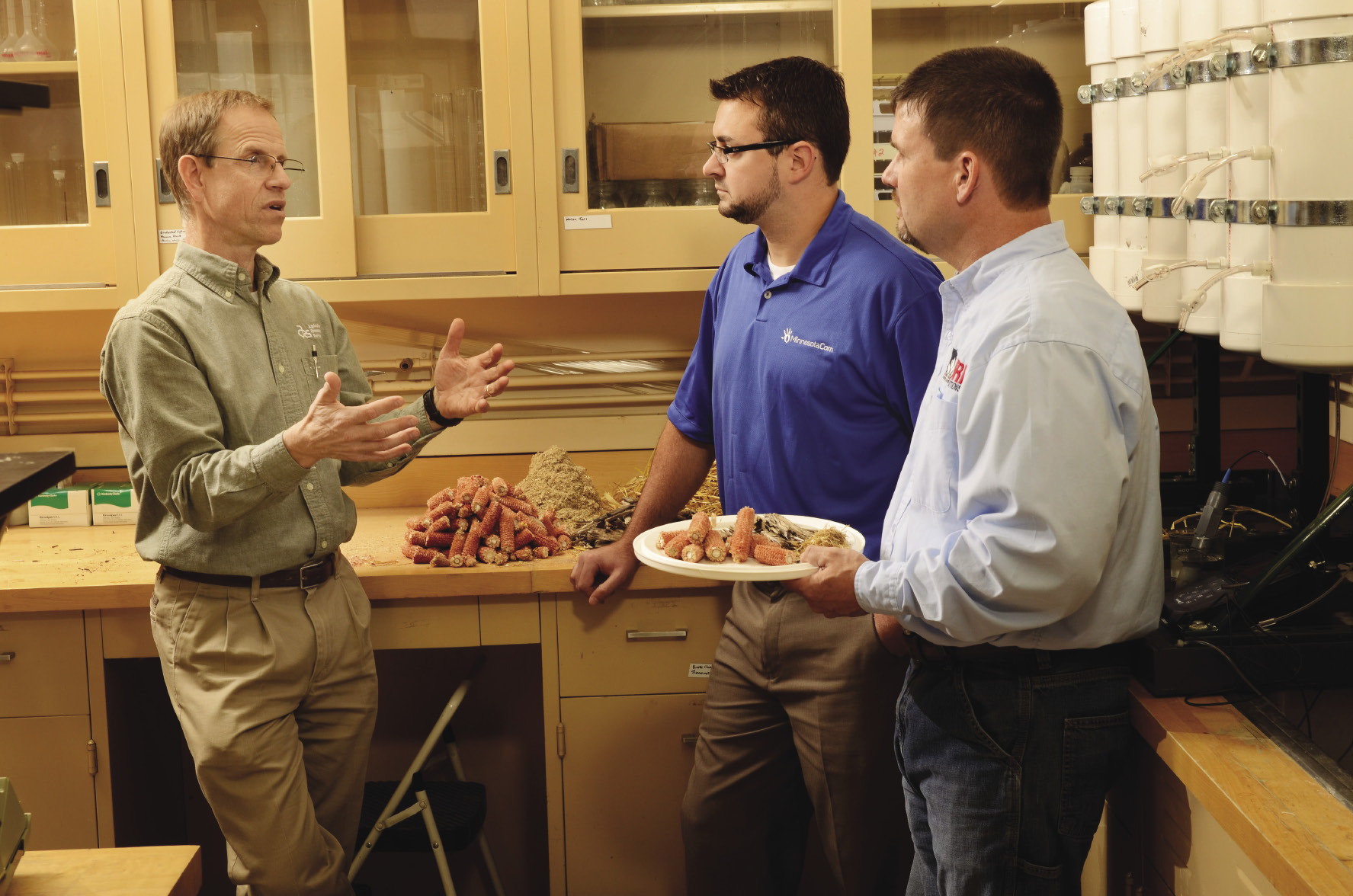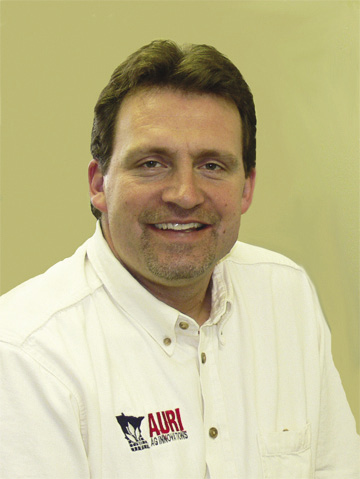St. Paul, Minn. — Crop residues may be used to clean up water drained from agricultural lands.
Still relatively new, bioreactors use organic materials such as wood chips or straw to reduce nitrogen in drainage water. When submerged, the residues provide an environment that supports microbes, which consume nitrate nitrogen in the water, reducing it to nitrogen gas and denitrifying the water.

“Bioreactors can reduce nitrate concentration in drainage water by 30 to 70 percent, which is substantial,” says Gary Feyereisen, agricultural engineer with the USDA Agricultural Research Service in St. Paul. “Drainage is a big issue in the entire Midwest, and many producers are interested in practices that lessen environmental impact.”
Bioreactors, also called biofilters, are becoming more common in agricultural drainage systems. Several have been installed in Illinois, Iowa and Minnesota. Currently, a bioreactor’s price tag is determined by the cost of wood chips, the most common filter media. So AURI is evaluating and comparing the effectiveness of agricultural residues versus wood in bioreactors. The study, supported by the Minnesota Corn Growers, will be conducted by Feyereisen at the USDA-ARS lab in St. Paul.
“The high cost of wood drives the cost of bioreactors,” says AURI scientist Al Doering who heads the institute’s coproduct utilization program. “This project will look at other available materials that producers could use. Chances are good that if a farmer is interested in this technology, they are also producing their own media.”
Typical bioreactors are rectangular structures or trenches, up to 200 feet long, lined with plastic and filled with three to four feet of media such as wood or ag fibers. They are then covered with a foot or two of topsoil. Farm drainage tiles direct water, through the biofilter, into existing ditches or tile mains.
Feyereisen says bioreactors can treat water from areas up to 80 acres, and larger units are being tested.
“It’s critical that there be water flow through the filter materials,” Feyereisen says. “Porous spaces are needed to convey water fast enough, so it’s important that they maintain structure.”
According to Feyereisen, wood and corn cobs maintain their structure well, while other materials such as corn stover and grain straws tend to mat. For those residues, additional media may need to be added to maintain proper water flow. Also, AURI will be sourcing and characterizing the appropriate particle size of ag fibers, Doering says.
Temperature variability is another factor. Feyereisen says microbes generally are more active and denitrify water better in warmer weather. However, research shows there is nitrogen reduction even when temperatures are slightly above freezing. The 15-month AURI project will evaluate the cold weather effectiveness of various agricultural fibers.
The research offers potential new uses for agricultural byproducts, such as corn stover and wheat and barley straw. The fibers could also increase bioreactor efficiency, improve drainage water quality and potentially increase the number of acres that a single reactor can treat.
“It addresses several issues for producers who are using or considering biofilters,” Doering says. “It could allow them to utilize ag fibers that they are producing on their farm, increasing value of a coproduct they produce. Since the cost of the wood fibers is one of the largest expenses, using locally available media would help them avoid those costs.”
The initial evaluation of physical and biological characteristics of ag residue will be done in the ARS lab. This will help determine which ones have the potential to warrant in-field testing.
Editor’s Note: about the writer Dan Lemke

This is the final Ag Innovation News story contributed by Dan Lemke, former AURI communications director. He has accepted the communications director position with Minnesota Soybean in Mankato. Dan has written a couple hundred stories for Ag Innovation News since he joined AURI in March 1995, coming from KEYC-TV in Mankato where he was a weather and farm market reporter. Not only did Dan write an abundance of short, reader-friendly articles about innovative projects and businesses, he was a great communicator for AURI, with a quick wit and friendly, positive attitude. Dan expanded AURI’s presence at Farmfest, trade shows and through social media such as Facebook and YouTube, among other AURI online and print communications. While he may no longer be on AURI’s staff, he won’t be far away at one of AURI’s partner organizations, Minnesota Soybean, which is the Minnesota Soybean Growers Association and Minnesota Soybean Research & Promotion Council.
AURI and bioreactors
Idea to opportunity: Bioreactors that filter water from farm drain tiles typically use wood chips, which are rising in cost. If the chips are replaced with ag residues, producers could use their own byproducts to filter drainage water.
Outcomes: AURI’s 15-month project is testing and comparing the effectiveness of ag residues, such as corn stover and straw, at the USDA-ARS lab in St. Paul.
Funding partner: Minnesota Corn Growers
